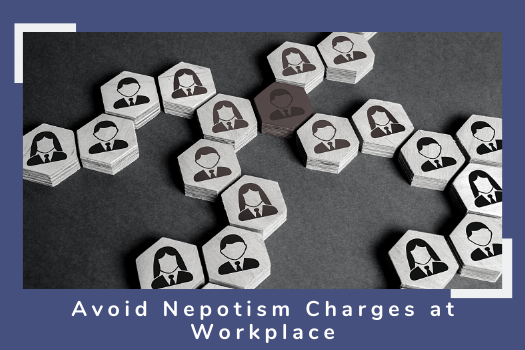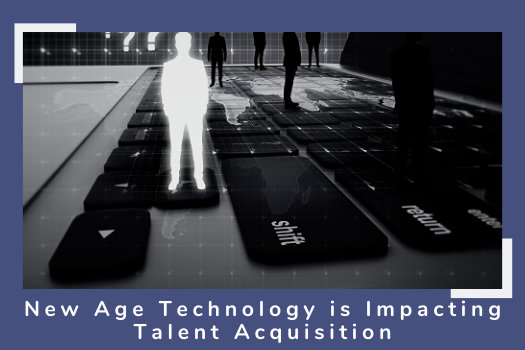Keep employees at the heart of the business
Prachi is a dedicated leader & management an executive with over 15 years of experience in diverse areas encompassing learning & development, executive coaching, organizational development, design & implementation of successful learning strategies with a strong focus on alignment with organizational goals. She is a subject matter expert in leadership development with exceptional coaching & consulting skills. She is proficient in driving teams and individuals to the highest echelons of performance including people from different levels of seniority and roles in leadership.
In her current role, Prachi leads the L&D organization for Dassault Systemes in India that includes three legal entities 3DS India R&D Lab, Dassault Systemes Global Services, and 3DS Sales and Marketing. She has played a pivotal role in orchestrating and deploying several Strategic Organization and Leadership Development Priorities in her organization.
Prior to 3DS, Prachi was an independent consultant for 5 years and has worked with clients from a gamut of sectors including manufacturing, real estate, IT, ITES, banking and educational institutions. In her stint as an entrepreneur consultant, she has coached and facilitated a diverse audience, including senior and top management employees, and leadership teams.
Prachi is - Associate Certified Coach from International Coaching Federation; TA 101 from International Transactional Analysis Institute; Certified Extended DISC Administrator; Certified Professional Facilitator from DDI; Situational Leadership II from Ken Blanchard Company and Certified in Neuro-Linguistic Programing (NLP).
Thank you, Prachi, for agreeing to do this interview with us. Kindly be as candid as you can.Lets Start!!!
How does the pandemic year affect you? What changes, professional and personal, does it bring into your life?
The year 2020 brought with it a World crisis, perhaps never seen before. COVID-19 changed many things, including the definition of a normal life. I stayed on my own for a major part of the lockdown. It didnt seem easy at that point in time. However, today, when I look back at that phase, it seems like a long enriching pause that provided an opportunity to dwell deep within. Through last year I found in me the strengths that I was not aware of. For me, 2020 was a year of resilience, endurance, perseverance, tolerance, compassion, love, care, and strength. I realized in a true sense what it means to have gratitude and count your blessings. This was a huge realization. On a personal front, 2020 was a year of health and wellness. I utilized the staying alone time and work from home phase to meditate, eat well and exercise well and this resulted in the achievement of a long-pending goal on the fitness front. In the professional space, as a team, we surpassed our achievements of the previous year and in fact, one of our projects won two annual global awards and as the team leader, I got the opportunity to present our project in the global town hall. The pandemic is seen in a bad light, as a disruptor of things, yet individually and as a team we found in it an opportunity, to challenges ourselves and reinvent our lives in ways that were most meaningful to us.
In the new normal, some employees will be mandatorily working from the company premises, some will be allowed to permanently work-from-home, and others will be following a hybrid schedule. How do you foresee the future workplace? How will companies ensure employee engagement? What will be the prominent elements of NEW work culture?
In my view, the hybrid and flexible work schedule is here to stay, which would mean a huge portion of the workforce is likely to be working from home multiple days a week. With this new normal the traditional definition of the workplace will undergo a change. Traditionally, the workplace has been a place people go to in order to work. After the year-long hiatus from offices, we know that the workplace could simply be our living room or an environment we choose to work in. Today, on one hand, we have employees who are talking about work from anywhere leave aside work from home, and on the other hand, we also have examples of people who have struggled with the isolation and loneliness of being apart from their colleagues. The future workplace has to cater to the needs of both kinds of employees. I think the future workplace will be more like collaboration centers where employees can go, to brainstorm, discuss and meet clients when they need to and on other occasions, they may continue to work from home or anywhere. While working remotely has its fair share of benefits, it also has some downsides and one of them is employees feeling less engaged and connected to their company. It takes more effort for remote managers and workers to engage with others. Going forward, one of the key skills of managers and leaders will be their ability to engage employees virtually and gauge employee engagement in a virtual environment. Companies will have to invest in this key skill-building so that managers feel confident in having direct communication with their teams about their work and their passion levels. Lastly, as we move and embrace the new ways of working one prominent element of the work culture will be outcome-driven work. The organization will have to move from the timesheet approach to evaluating people based on the outcomes or objectives they achieve. This may require a mind-set change for several managers who have been used to a certain style of working.
The new normal requires a new definition for work-life-balance. In your role, do you think work-from-home is a boon or a bane? What challenges, if any, did you face in maintaining a work-life balance? What will be the new definition of work-life-balance?
There is no absolute answer to this question. An option is a boon, or a bane depends on the priority, situation, and need of the individual leveraging the option. Personally, for me, work from home has been convenient. I enjoyed the luxury of working from my home office without having to leave at a set time every day and worrying about the traffic. Work from home is an option I would like to have going forward as well. Having said that I do not believe that there is a correlation between work from home or office and work-life balance. Work-life balance for me is the quality of life I want to lead, and I believe like any other goal I want to achieve in my life, it is within my control. Having said that there will be days when work will take priority and vice versa, and perhaps that is what balance is all about. I strongly believe that each individual is accountable for the kind of life they want to live. I think balance is a choice that one needs to make in one life and give priority to this choice. Stringent timelines, urgent project deliveries, and other work-related complexities are a fact and here to stay. It is important to take accountability for personal needs as we would take accountability for work. I do hear people saying that work from home has diminished the boundaries between office hours and personal time. To those people, I would like to ask who has diminished the boundary and who can rebuild it? To sum up, I do not think COIVD or the new normal can be held responsible for the presence or absence of work-life balance. It is up to each individual to make a choice and act upon it.
COVID-19 exposed the unpreparedness of several leaders in many organizations to manage crises effectively and efficiently. As an HR Leader, how will you prepare future leaders to manage crises of this magnitude? What NEW LEADERSHIP COMPETENCIES will become necessary for the success of a leader?
Why just leaders, none of us were prepared for this topsy-turvy world. We all are learning on the go as the situation continues to evolve. Many of the traits that have always been important for leaders like self-awareness, empathy, inclusion, clarity, authenticity, and agility are even more crucial today. In my view, COVID-19 re-emphasized the importance of keeping employees at the heart of the business. We, therefore, saw a surge in employee wellness and well-being initiatives. I believe this will become the central theme for leaders and organizations to be successful going forward. Once again this may not be an entirely new leadership competency, however, in the new normal, this will be of key importance. If we read the way WHO defines well-being, we see that there is a direct correlation between employees well-being and their ability to provide their best to any task. Employee Well-being thus is one of the key differentiators between an average performer and a top performer. Going forward leaders across the hierarchy starting from first time leader to C- Suite executives will have to take a keen interest in the well-being of their organization. HR organization and specifically the learning & development function will be a key enabler in preparing managers and leaders to play this crucial role. This can be achieved through interventions that will enable leaders to decrease emotional exhaustion and create psychologically safe spaces for their team members.
As per your experience, in a virtual environment, what are the key elements to ensure meaningful collaboration and accountability among team members?
Virtually working teams is not an entirely new thing. We always had some teams working across geographies. In my view, the fundamentals of accountability and collaboration remain the same in a virtual environment as well. The concept of contracting is extremely helpful for leaders who want to bring in collaboration and accountability in their teams and perhaps more so in the current situation. A contract is an explicit agreement that lays out the ground rules of working together. It covers the responsibility of everyone, how members make decisions, communicate, follow up, share information, provide feedback, and support each other. To bring in accountability and collaboration, a powerful first step for a leader is to form a contract. Establishing a contract can reinforce positive behaviors while helping teams to overcome dysfunctional ones. While doing so, leaders must be cognitive of all the levels of contracting. On one hand, it is important to contract on professional goals and ways of working, on the other, it is equally important for leaders to be cognizant of psychological contracting. This includes the unspoken and often unconscious expectations that the members bring to the table. For this, a leader must work on increasing their levels of awareness- paying attention to own feelings, self-coaching, and use direct communication to gently bring it into the one to one connect with the concerned team member. The onus on the leader is huge and therefore it is important that the leader approaches all of this with compassion and sensitivity.
Lastly, post-pandemic, in the new normal, what will be the critical expectations of CEOs from their Learning & Development Leaders?
Learning & Development organization emerged as a strategic function in 2020 and I believe it will continue to remain so post-pandemic as well. Three key focus areas for learning & development leaders that emerged in the pandemic were:
- Upskilling and reskilling of the current workforce to fill the skill gaps.
- Leadership interventions to enable managers and leaders across the board to lead virtually and manage crisis with sensitivity in a new environment.
- Learning as a form of continuous engagement for employees, this included social learning, reverse mentoring, and gamification of learning initiatives.
One challenge of course for learning leaders was to ensure the effectiveness of all learning initiatives in a virtual environment. While it is absolutely possible to do one-to-one mentoring and coaching virtually, group facilitation is a challenge. Internet bandwidth issues and other situations on personal front of participants sometimes worsen the engagement. I think going forward engaging teams virtually and ensuring they remain committed to the values, culture, and goals of the organization will be a critical expectation of CEOs from their L&D leaders. This will be even more vital for the members who joined the organization during the pandemic and have had no to little face time with their colleagues. L&D leaders will have to work very closely with business leaders and employees to understand the learning & growth needs and curate interventions that are feasible to be rolled virtually, ensure business objectives are met, and at the same time cater to the personal aspiration of employees.






